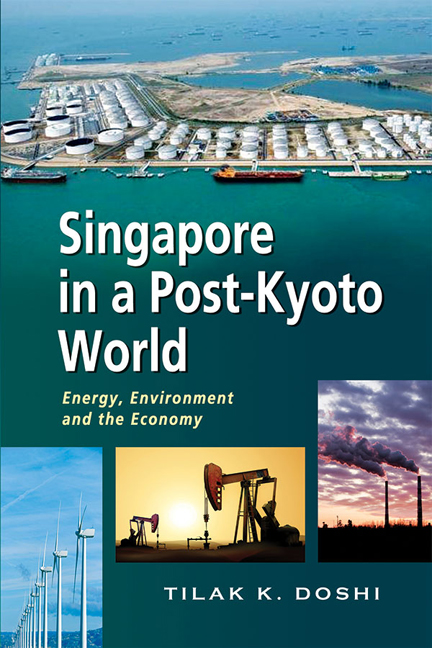Book contents
- Frontmatter
- Dedication
- Contents
- List of Tables and Figures
- Preface
- Acknowledgements
- List of Abbreviations
- Introduction
- 1 Economy, Energy, and Emissions
- 2 Climate Change Negotiations: From Copenhagen to Durban via Cancun
- 3 Climate Change Finance: Who Pays and Who Receives?
- 4 Singapore's External Sector: Impacts of Emission Mitigation Policies
- 5 Energy and Emissions: The Five Strategies
- 6 Concluding Remarks: “The Three E's”
- Index
- About the Author
3 - Climate Change Finance: Who Pays and Who Receives?
Published online by Cambridge University Press: 19 May 2017
- Frontmatter
- Dedication
- Contents
- List of Tables and Figures
- Preface
- Acknowledgements
- List of Abbreviations
- Introduction
- 1 Economy, Energy, and Emissions
- 2 Climate Change Negotiations: From Copenhagen to Durban via Cancun
- 3 Climate Change Finance: Who Pays and Who Receives?
- 4 Singapore's External Sector: Impacts of Emission Mitigation Policies
- 5 Energy and Emissions: The Five Strategies
- 6 Concluding Remarks: “The Three E's”
- Index
- About the Author
Summary
In the long climate change negotiation process since the Kyoto Protocol, which was adopted in 1997 and entered into force in 2005, the key areas of contention regard not only the apportionment of national responsibilities and obligations in emission reduction activity, but also the rules governing the raising and distribution of public and private finance. At stake are not only questions on which country (or group of countries) does what in curbing emissions and preparing to adapt to climate change impacts, but also which countries are net recipients of climate finance and which are net contributors and by what amount. An agreement on climate change finance is now viewed as critical to the success of the ongoing United Nations Framework Convention on Climate Change (UNFCCC) negotiations that aim to reduce global greenhouse gas (GHG) emissions. However, it is only in the aftermath of the Fifteenth session of the Conference of Parties (COP15) that was held in Copenhagen in 2009, that climate change finance assumed a central role in the negotiations over climate change.
Climate change finance played a relatively peripheral role in the negotiations over the Kyoto Protocol. Although under the UNFCCC, Annex II countries (which include only the Organisation for Economic Cooperation and Development [OECD] members of Annex I) are required to provide climate-related finance to developing countries, this did not really become a pivotal issue since the developing countries had no emission reduction targets that required financial support. The only issue as far as finance was considered was how the Annex I mitigation targets could be achieved in a cost-effective manner. The Clean Development Mechanism (CDM), which allows Annex I countries to meet their mitigation obligations by financing emission reduction projects in developing countries, has been the main vehicle for financial flows to developing countries. Primary CDM flows peaked at US$6.5 billion in 2008, but have since declined to US$2.7 billion in 2009 and US$1.5 billion in 2010 as the Kyoto Protocol nears its expiry year of 2012.
- Type
- Chapter
- Information
- Singapore in a Post-Kyoto WorldEnergy, Environment and the Economy, pp. 59 - 118Publisher: ISEAS–Yusof Ishak InstitutePrint publication year: 2015

